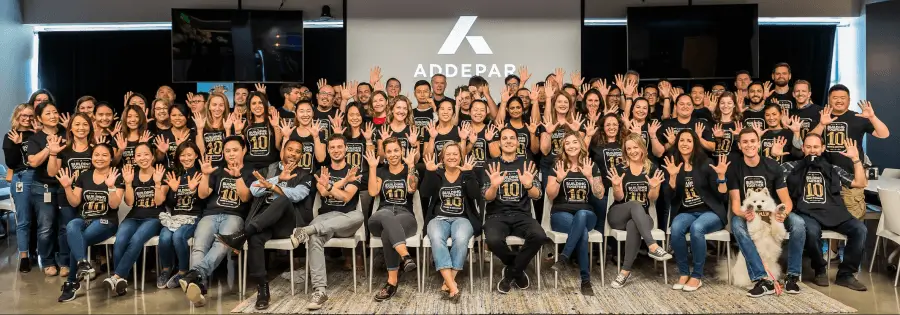Can sales conversations become an exact science?
Yesterday, I was driving to a conference with a friend of mine, who happens to be one of the smartest Internet marketers I know.
We talked about the world I live in professionally – the B2B sales world.
After listening intently to me for what must have been 20 minutes, he remarked…
“Sales seems like such a black art. I have no idea why my company’s most successful sales reps are as successful as they are. Internet marketing, by contrast, is pretty easy. Analytics helps marketers understand what’s working, and what’s not.”
Marketing wasn’t always that way. Before analytics enabled the marketer, marketing was arguably as much “black art” as sales effectiveness is today.
It makes you wonder: given the volume of technology being applied to the sales profession, is sales on the same trendline?
Will technology reduce sales effectiveness down to the mastery of data-driven, prescriptive actions?
Science is Taking Over the Sales Process
We’ve already seen science introduced to several activities within the sales process. Data-driven lead management, prospecting, and forecasting are all great examples.
Some of the best sales leaders in the world are using data and science at key points in the sales process to grow revenue incredibly fast.
But what about the element of sales that has the most amount of “black art” to it: the sales conversation?
Will data, sales analytics, and science ever reduce the conversation between a sales rep and a prospect down to the exact words, phrases, questions, and actions to take? Or will this always remain an intuitive art form?
Conversations Can Now Be Analyzed with Technology
Like I said, the last leg of bringing science to the sales profession is bringing science to sales conversations. This is where most of the “black art” of sales success lies.
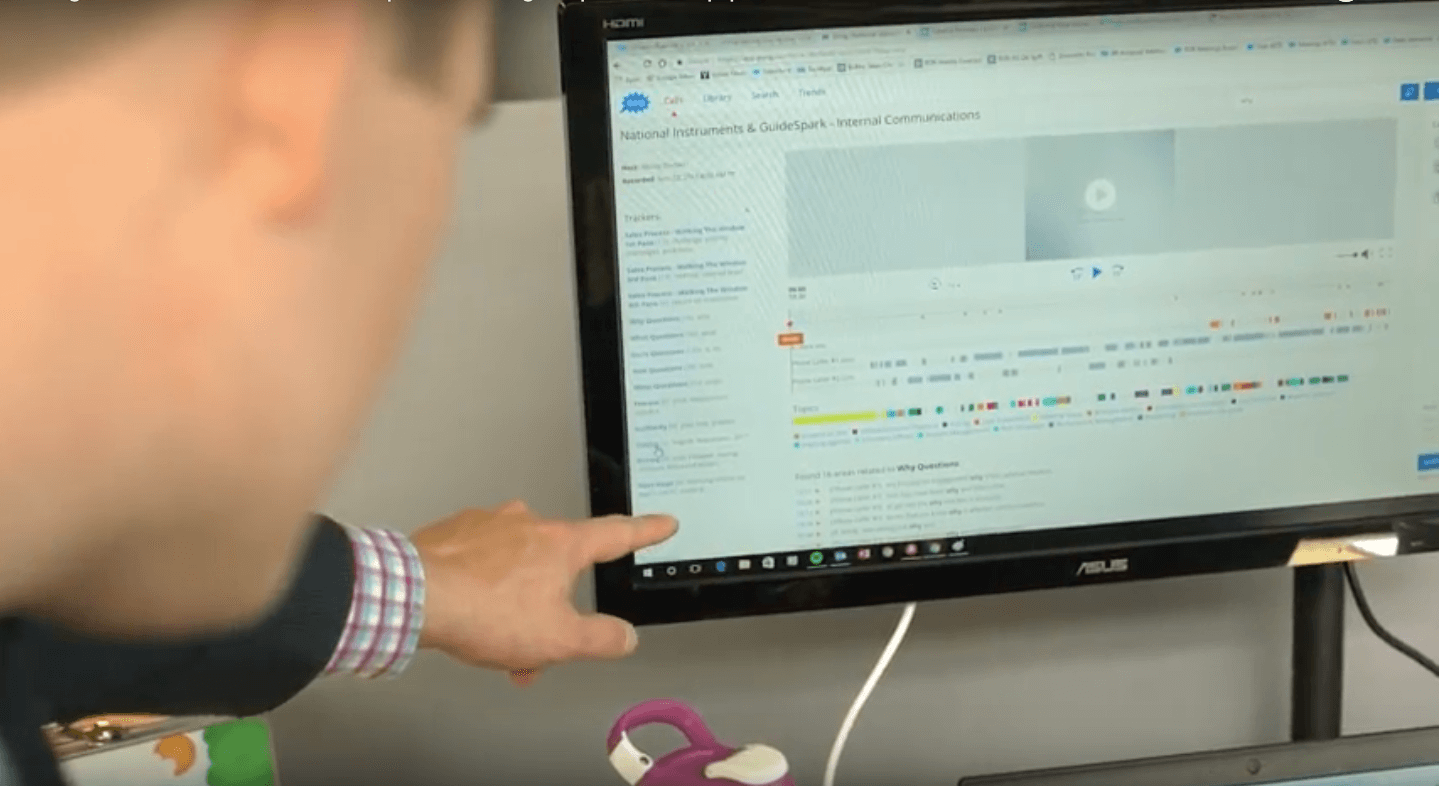
Sales conversations can now be turned into data (through speech-to-text), tied to specific outcomes within the CRM, and analyzed using algorithms to identify the patterns and trends that lead to positive sales outcomes: more revenue, higher win-rates, shorter sales cycles.
Practical Examples of Sales Analytics
First, the talk-to-listen ratio.
When we analyzed our first batch of sales calls as a company (25,537), we discovered that the “highest converting” talk-to-listen ratio on first calls for B2B SaaS account executives was 43:57
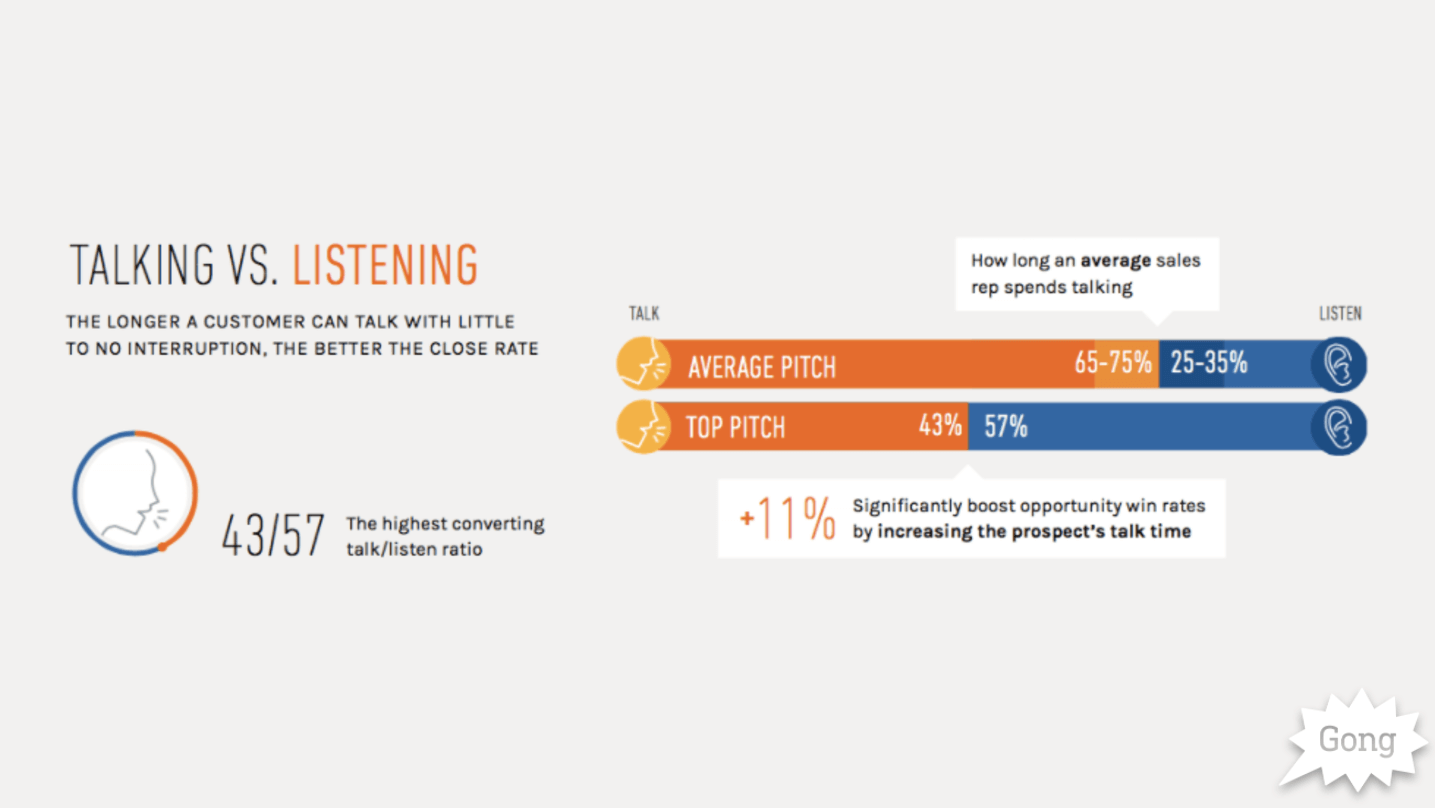
Another example: the highest performing B2B sales reps “talk price” between the 40-49 minute window within their calls:
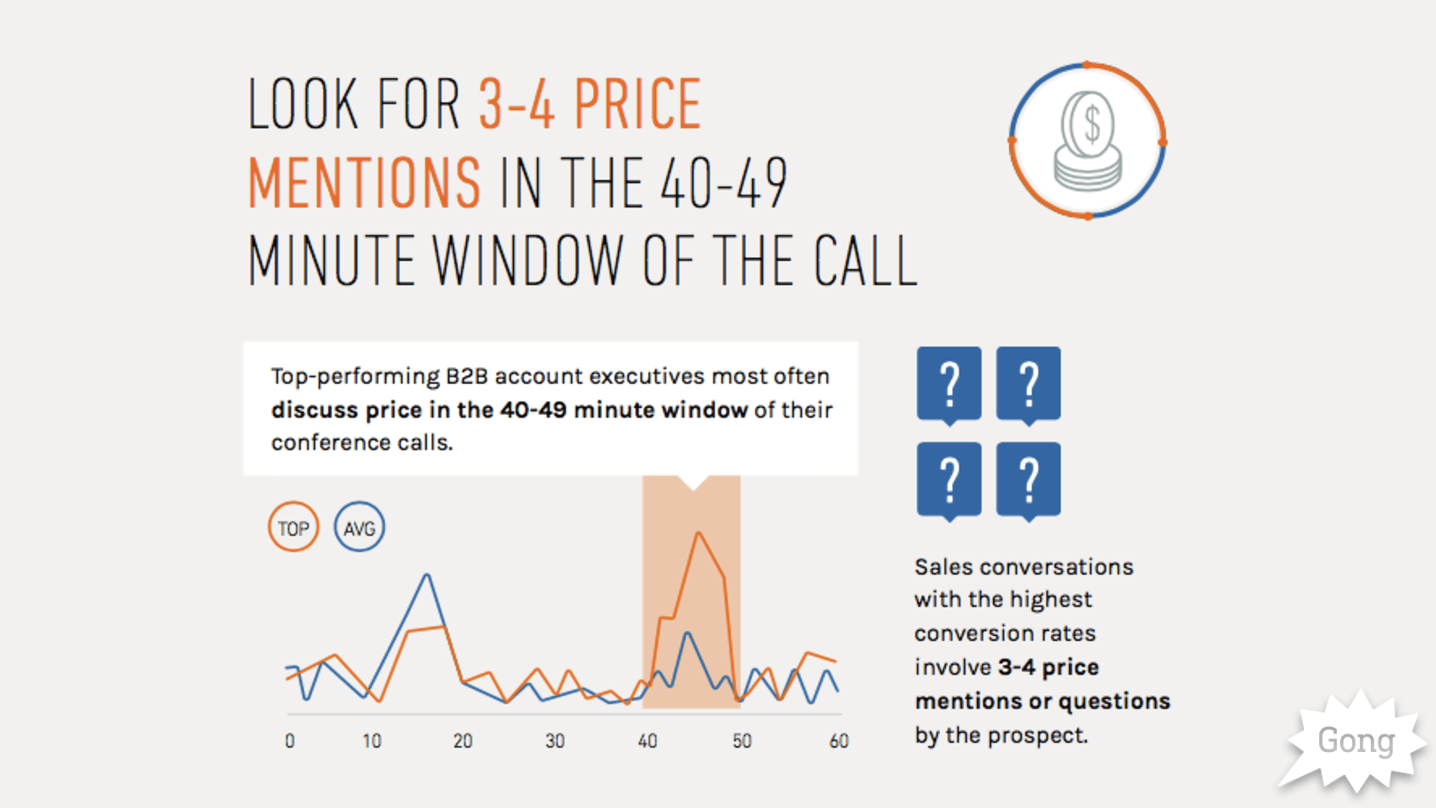
And finally one more: sales reps who use “risk-reversal” language when closing deals have a 32% higher likelihood of making the sale than sales reps who don’t:
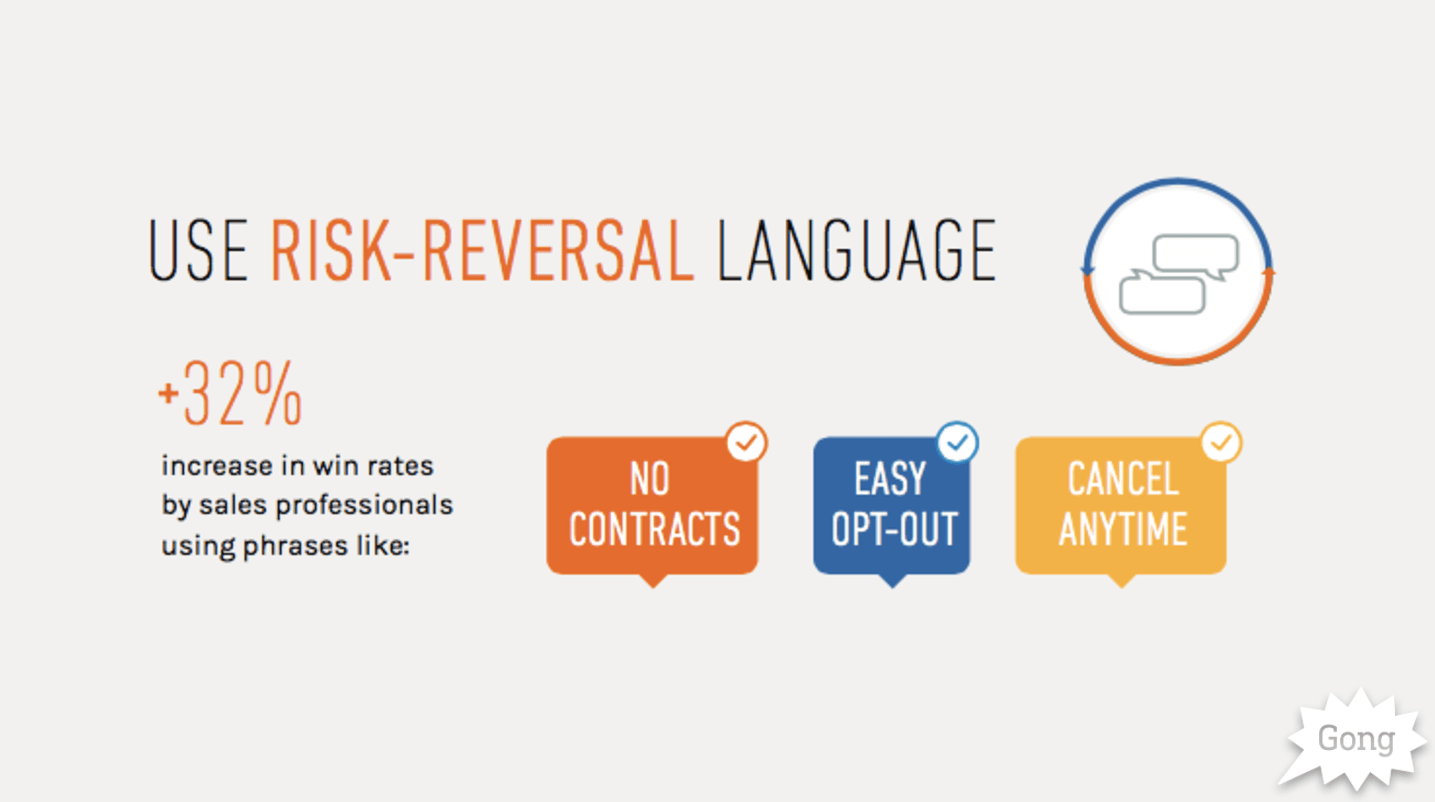
There are several dozen more examples just like this. The point behind showing these to you is to illustrate how data and science are helping us understand the anatomy of a winning sales conversation – at every phase of the sales cycle.
The Future of Sales Conversations: Art and Science Combined
I’ve just given you three data-driven, prescriptive, scientific insights you can use to instantly improve the effectiveness of your sales conversations.
So, can we reduce the entire effectiveness of sales conversations to prescriptive insights like this? Can sales conversations be turned into a complete science?
My prediction is “not quite.”
Before the Internet, marketing was purely an art form (one could call it a “black art”). There was no data or science to help us reveal what causes marketing effectiveness.
But did analytics and marketing automation reduce marketing to a pure science?
Far from it.
Marketers still need to understand customer needs, marketing strategies, and come up with messaging that builds a long-term position in the market. Analytics has simply brought data-driven decision making to short-term (often tactical) issues.
In other words, technology didn’t reduce marketing to a complete science. It turned something that was purely an art into art + science. Both are equally needed and carry equal contributions toward effectiveness.
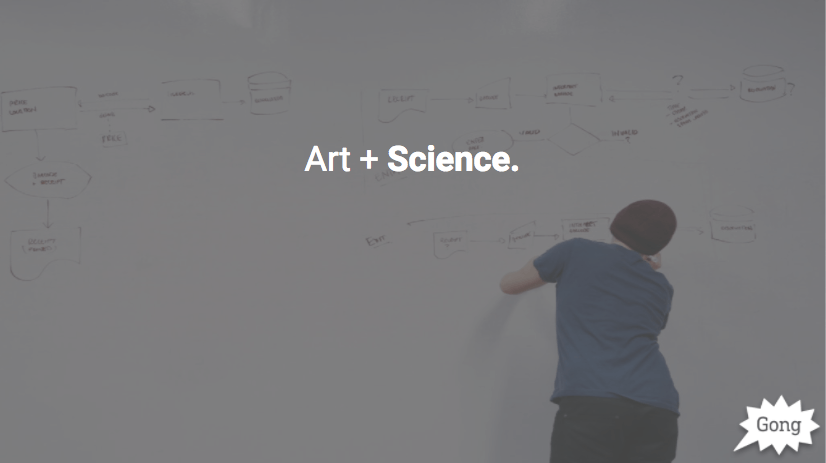
So, will conversation analytics reduce sales conversation effectiveness to an exact science?
Again, probably not quite. There are so many variables into what makes an effective sales conversation. Many of which cannot be neatly turned into a statistic or KPI. There’s a lot to be said about qualitative factors.
While sales conversations without analytics are a “black art,” analytics and technology simply transform sales conversations from pure art, to a mix of both art and science.
Quantitative and qualitative.
Half art, half science.
Intuitive insight + scientific analysis.
In other words, understanding sales conversation effectiveness will come down to using both analytics, as well as observing live calls and call recordings.
